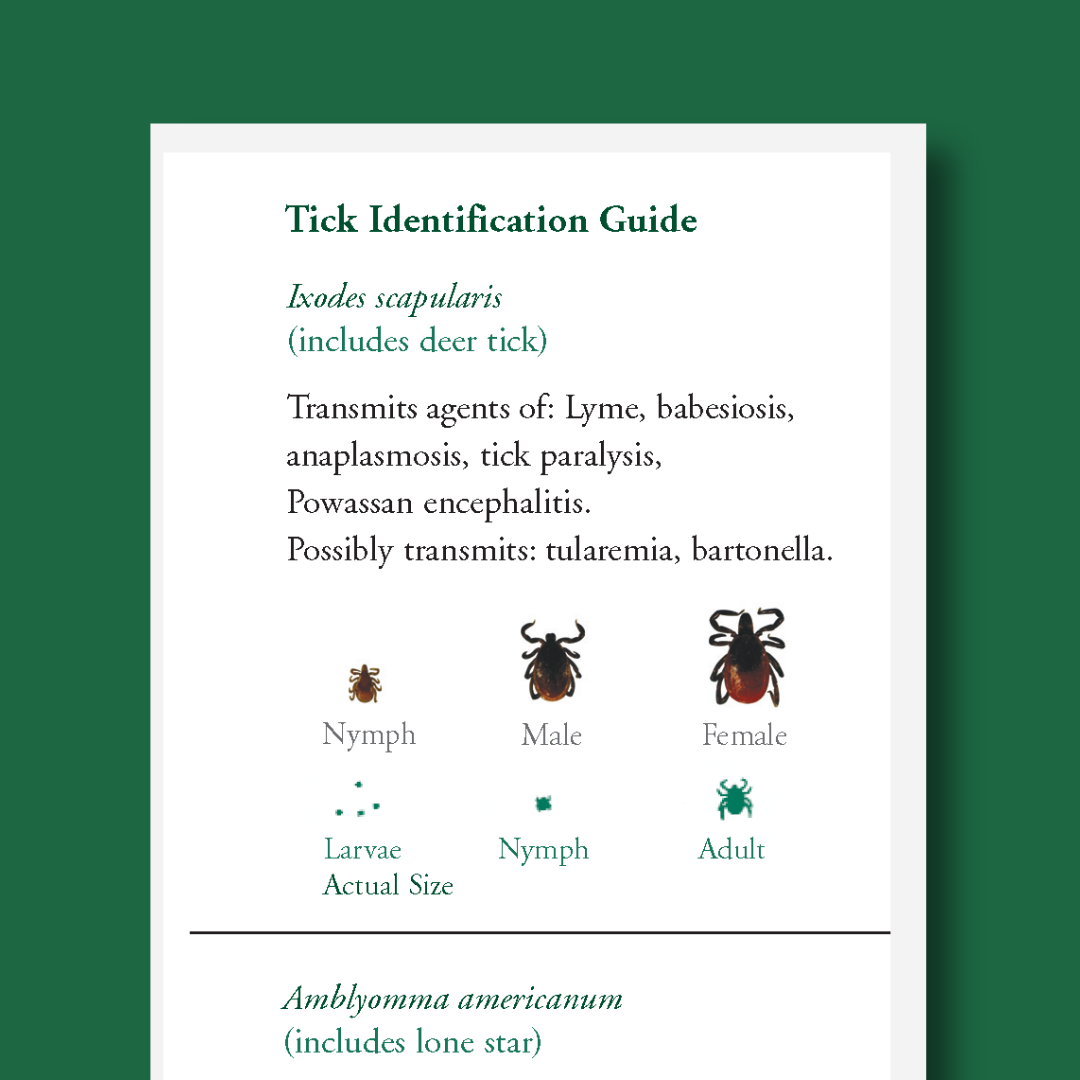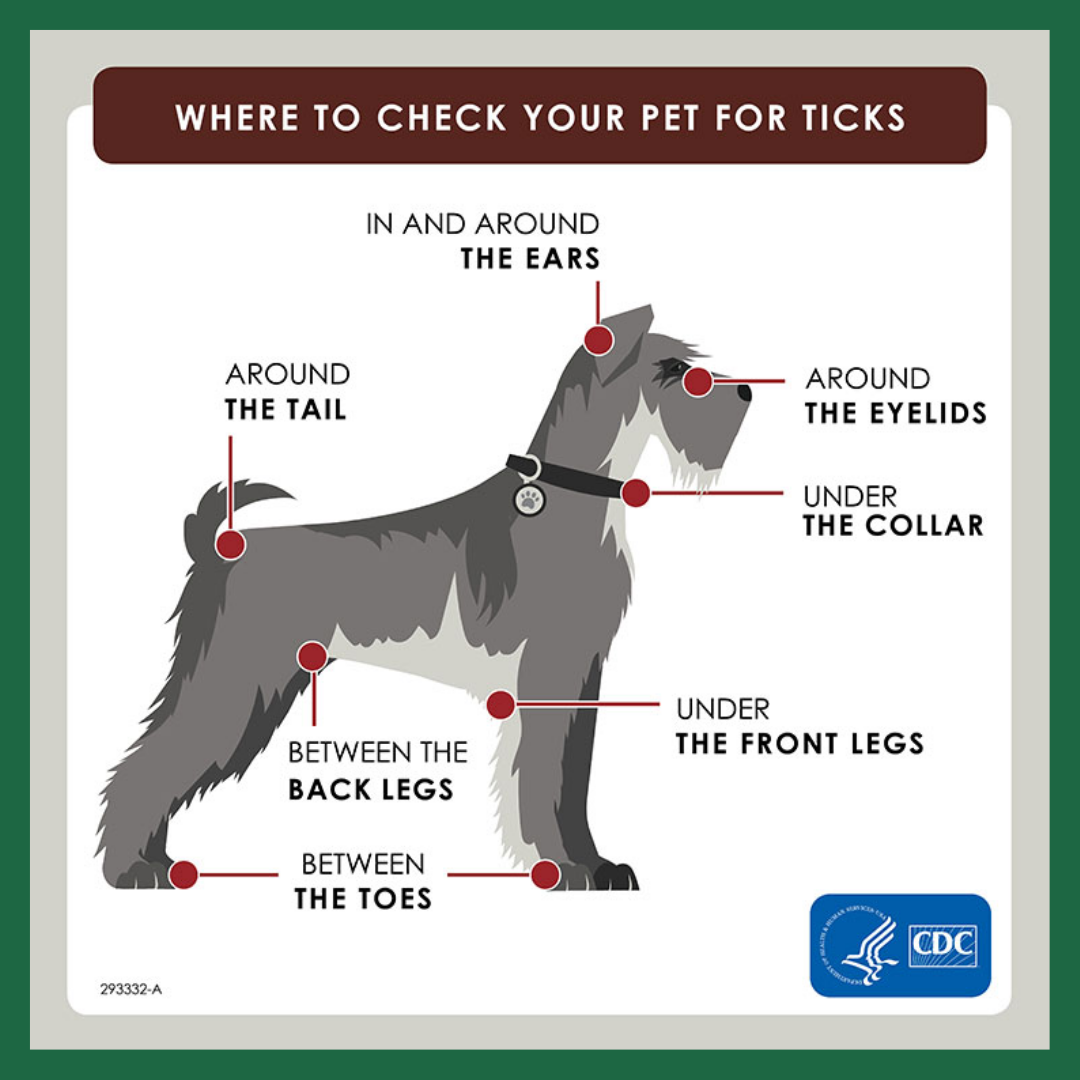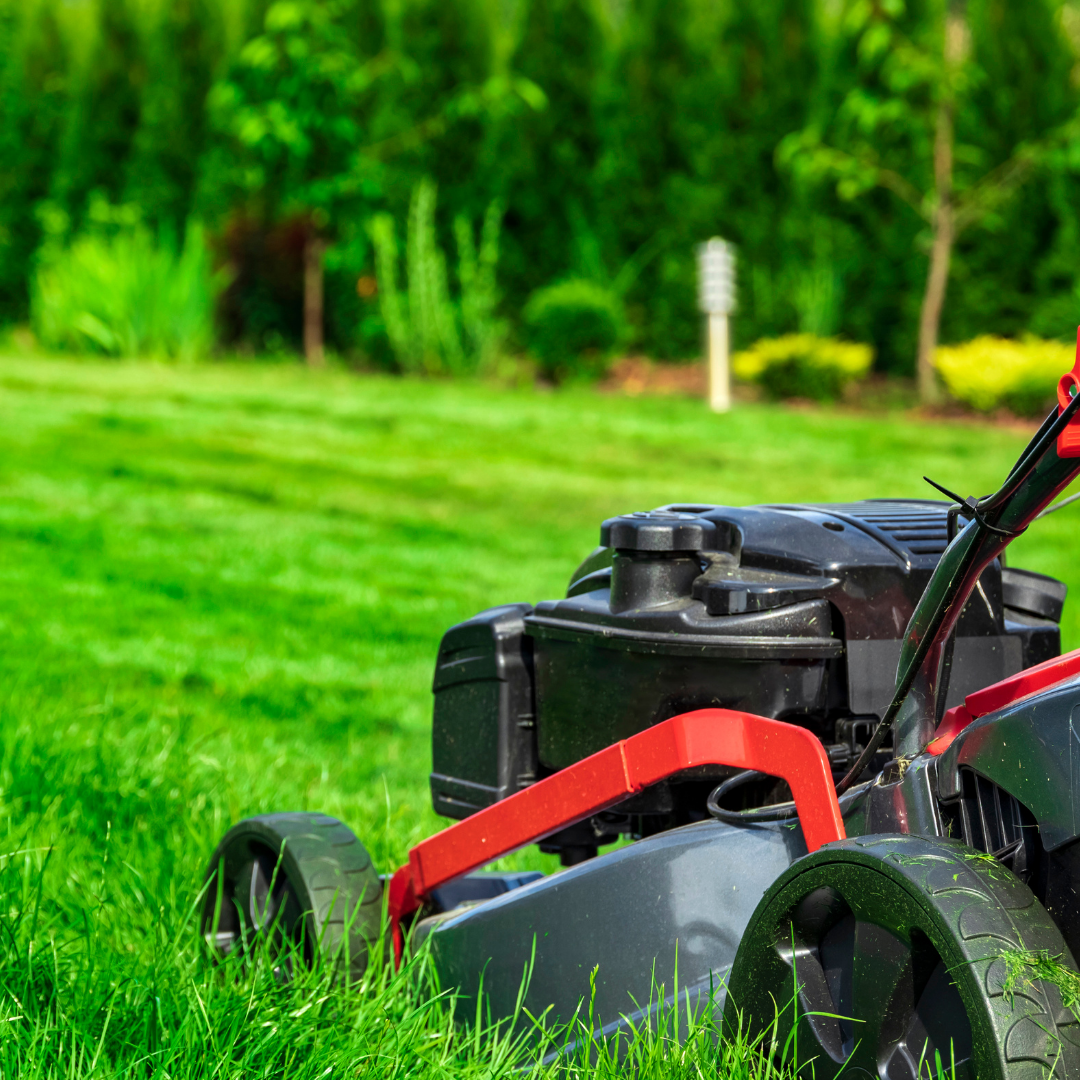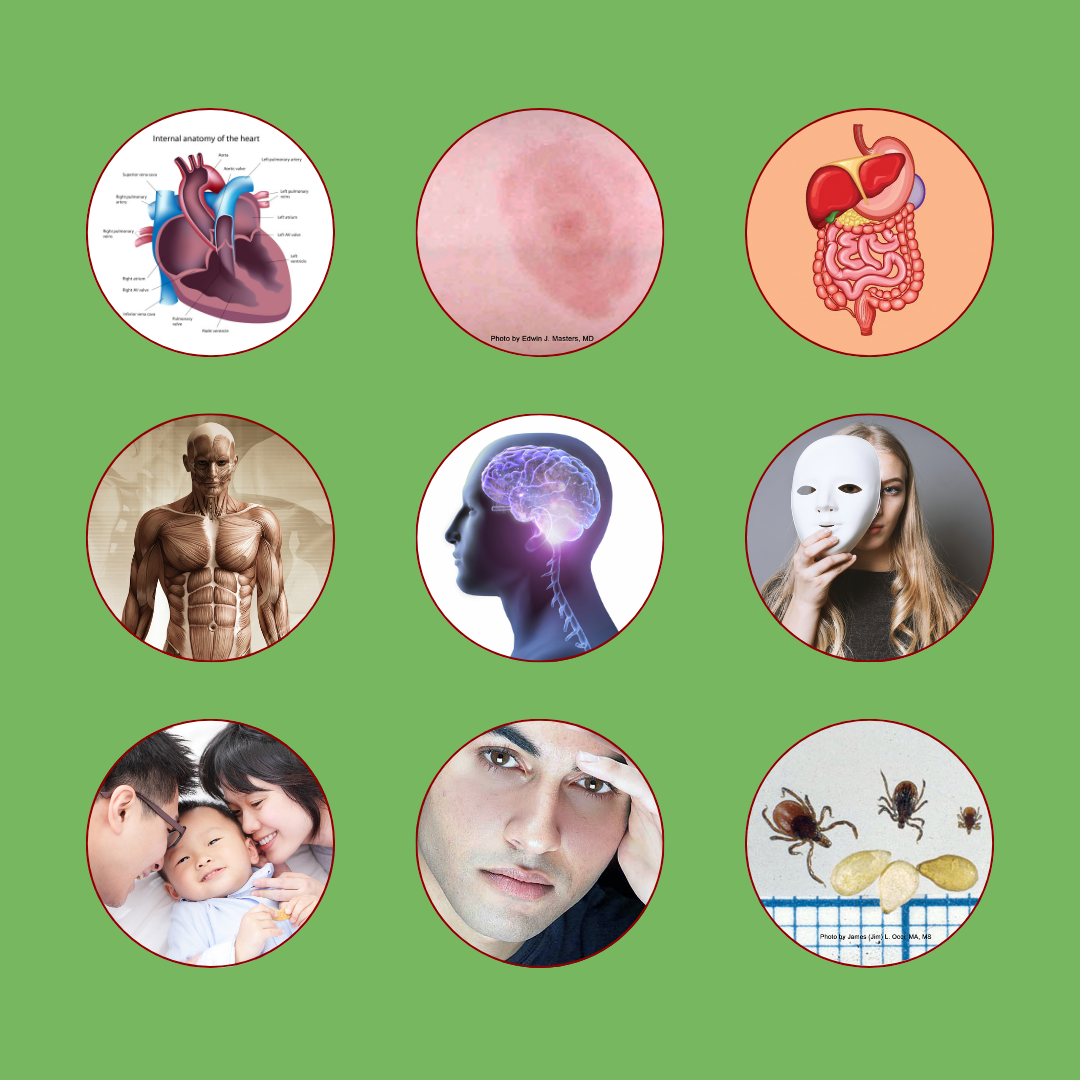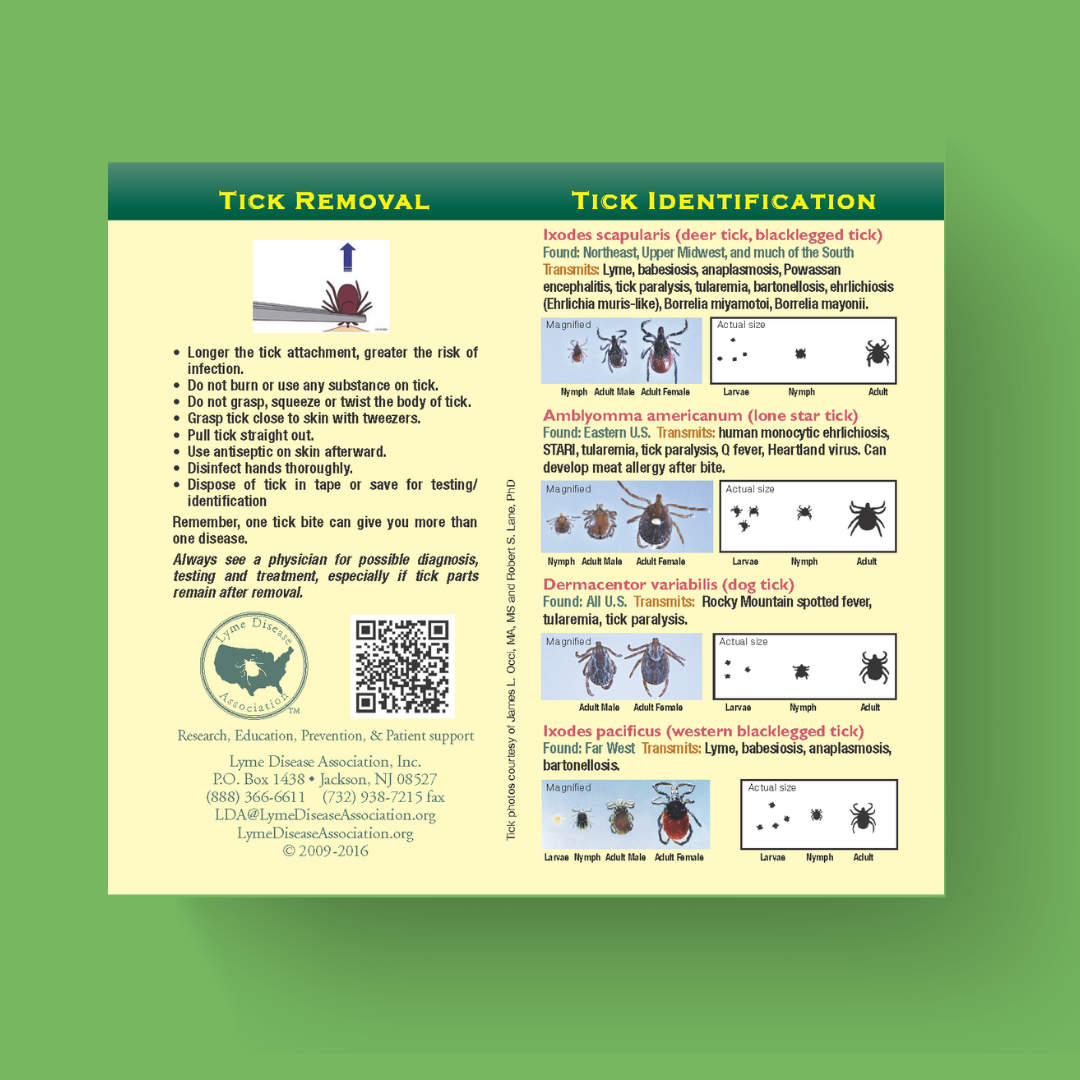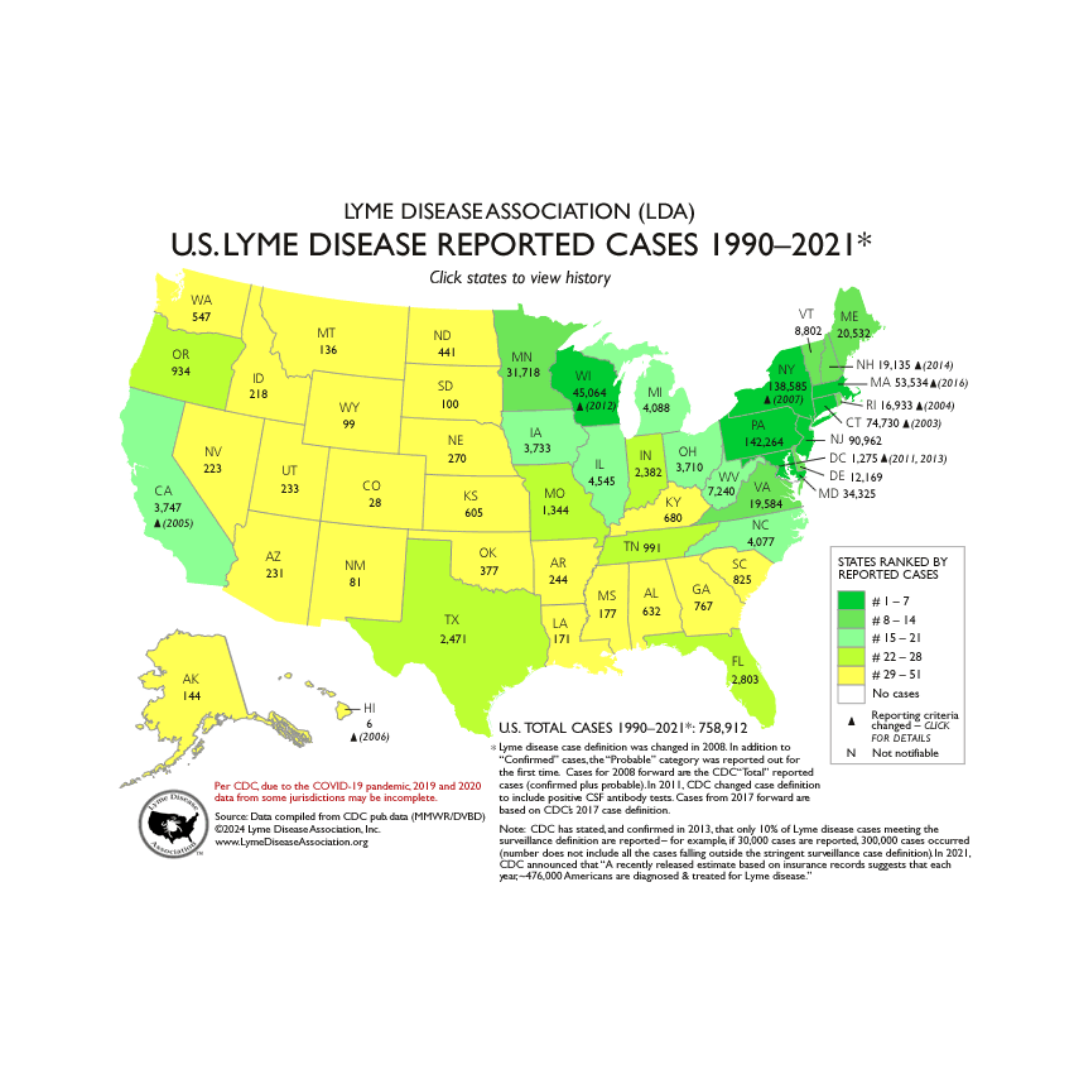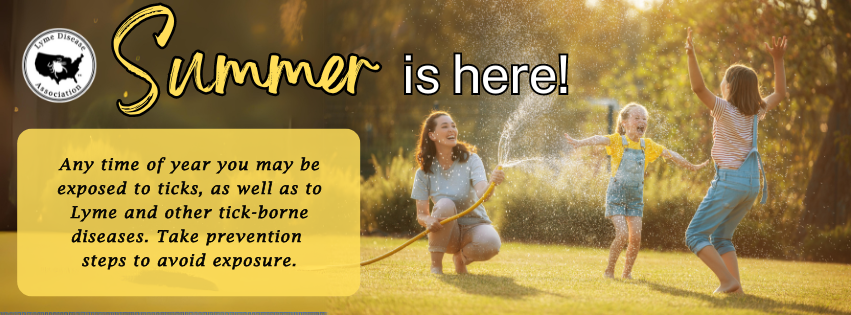
The most important thing you can do this summer to avoid Lyme and other tick-borne diseases/conditions is tick bite prevention! *The LDA does not make specific product recommendations or grant any warranties.
Tick Bite Prevention Stay vigilant this summer.
- Know where to expect ticks, and be aware in high risk habitats.
- Perform frequent, thorough tick checks.
- Wear light-colored clothes, long sleeves and long pants.
- Tuck pants into socks and shirts into pants.
- Put clothes in dryer for 30 minutes to kill ticks that may be clinging to clothing.
- Shower soon after returning indoors.
- Be sure to tick check and protect pets too!
Tick Repellents Follow manufacturer's directions.
- Check EPA registered products containing DEET, picaridin, IR3535, Oil of Lemon Eucalyptus (OLE), para-menthane-diol (PMD), or 2-undecanone for skin protection.
- Check products containing Permethrin for treating clothing and gear.
An example: Sawyer Products, Inc.- www.sawyer.com or Insect Shield-www.insectshield.com - Look for clothes which protect against ticks.
An example: www.rynoskin.com - Read more information on repellents from EPA here.
PREVENTION & PRINTABLES Lyme disease poses a mounting global health threat, with around 476,000 Americans diagnosed annually, emphasizing the urgent need for improved prevention measures amidst increasing incidence.
TICK IDENTIFICATION
Tick identification allows for early recognition of exposure to ticks prone to carrying Lyme disease. Additionally, tick identification helps monitor tick populations, assisting public health initiatives to reduce disease transmission and help protect communities from potential health risks.
HOW TO PROPERLY REMOVE A TICK
Prompt and proper tick removal is vital in preventing Lyme & tickborne disease transmission. The longer a tick is attached, the greater risk of disease transmission. Improper removal greatly increases risk of infection, as you can cause the tick to regurgitate diseases into you.
PRINT A WALLET-SIZE INFORMATION CARD
Our on-the-go resource helps you remember the importance of properly handling ticks to avoid tick-borne diseases like Lyme. Identifying and safely removing ticks is essential for protecting yourself and your loved ones from potential health risks associated with tick bites.
EDUCATION & RESEARCH Lyme Disease Association, Inc. is dedicated to supporting crucial research initiatives and offering comprehensive educational materials to the public, aiming to combat the widespread impact of Lyme disease.
STATISTICS ACROSS THE U.S.
Lyme disease has steadily become a significant concern across the United States. According to recent statistics, the incidence of Lyme disease has increased considerably in various regions. Vigilance in prevention is crucial to mitigate the impact of this widespread illness.






